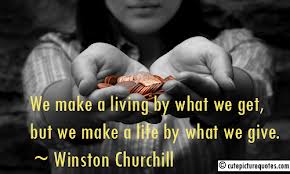This is a Think board we have learnt to knowledge our math thinking, this think board help us to be fast in our math.
Friday 28 March 2014
Skills For Adolescence, 2014.
Skills for Adolescence
Unit, Lesson 5
Reflect on this week’s quote
We make a living by what we get, but we can make a life by what we give.– Winston Churchill, British Prime Minister
Write your reflection below:
I think this quote is talking about, life, so like we make living by what we get, but we also can make some one's life by what we give. This quote relate to respecting each other, and share the things that they don’t have or what we don’t have. I love this quote because it shows me how we can make people’s life's better by giving them what they don’t have, like shoes and money, all the things they don't have. If we make someone life better, it will come back around, if you make some one's life better they will respect you for what you have done to them .
.
This is a document about a quote we all reflected on this week, this quote is about making someone's life and also it's about respecting one other, if you have had someone's life, they will respected you for what you have done for them to have a better life. This quote is a powerful quote.
Wednesday 26 March 2014
North Head Trip, 2014.
This presentation is a reflected on our trip to north head to discover about world war 1 and 2 and to also discover ANZAC in the olden days. At North Head it was a great, hot day, where we learnt a lot of new things. We will never forget the people that had fought for our countries.
Skills for Adolescence 2014.
This is a Google Drawing that represent Respect for our Skills For Adolescence Unit. For our Adolescence Unit we were learning about respecting each other, here is a quote we used to think about respect.
We make a living by what we get, but we make a life by what we give.
Tuesday 25 March 2014
Cybersmart,2014
Today lesson, on cyber smart, we use information finding skills to answer our investigation question.
Monday 24 March 2014
6 Hats Current Events,, 2014
This is my 6 hats current events, this shows me how I use my thinking hats when I am reading a current event.
Friday 14 March 2014
North Head Research, 2014
WALT: research specific information about a significant historic place in New Zealand.
Me and my partner Deandra had worked hard to perfect this presentation that shows you how to get to North Head, Devonport, Auckland and how long it would take for you to get there.
Wednesday 5 March 2014
World War One Presentation
This presentation was put together by Charday and Deandra, our own research helped us develop prior knowledge about what had in the past to shape the present which us young kiwis are living right at this moment.
ANZAC Day- cloze task.
Anzac Day - Cloze Task
Most Anzac day services Start with a march of returned service personnel
wearing their medals, and marching behind banners and standards. The
veterans are joined by other community groups, including members
of the armed forces, the Red Cross, cadets etc.
The march continues to the local war memorial, where a service takes place.
This includes the laying of wreaths by various organisations and members of
the public. Flowers have traditionally been laid on graves and memorials in
memory of the fallen. Laurel and rosemary are often used
in wreaths. Laurel was used by the ancient Romans as a symbol of honour
and was woven into a wreath to crown victors or the brave. Rosemary is used
for remembrance. The wreaths are laid to honour the people who have died
fighting for New Zealand.
The poppy has become the symbol of Anzac Day. The Flanders poppy as it is
also called grew in the trenches and craters of the war zone in Belgium and
at Gallipoli. These poppies grew wild in the spring. The soldiers thought of the
poppies as soldiers who had died. The poppy was very famous by Colonel
J.M. McCrae's poem written in Flanders' Fields. Poppies are sold on the day
before Anzac Day to raise money for the R.S.A. [Returned Services Association]
In most ceremonies of remembrance that is a reading of a poem. This is
often "The Ode to the Fallen" by Laurence Binyon. It was first published in
the Times newspaper in 1914.
They shall not grow did as we that are left grow old.
Age shall not weary those, nor the years condemn.
At the going down of the sun and in the morning.
We will remember them.
The last post is the trumpet call sounded in army barracks at 10pm at
night to mark the end of the ANZAC activities. It is also used at military
funerals and commemorative services to show that the soldier's day has
drawn to a final close.
This is usually followed by a period of silence for one or two minutes as a sign
of respect for those or have died. After observing the silence the flags are
raised from half-mast to the masthead. The Rouse is that played. The Rouse
called the soldier's spirits to arise and fight for another day.
The Reveille is played at the dawn services instead of the Rouse. The Reveille is
played only as the first call in the morning . It woke the soldiers up at
dawn.
Often hymns were sung and speeches made. The important part of the ceremony
is to remember those who died.
Subscribe to:
Posts (Atom)


